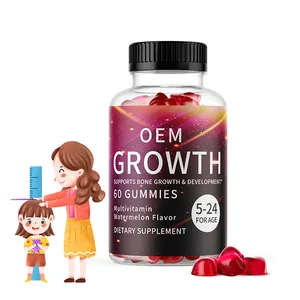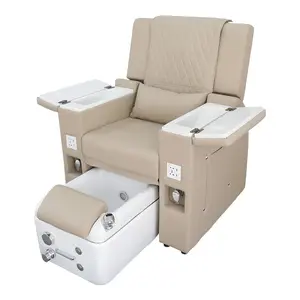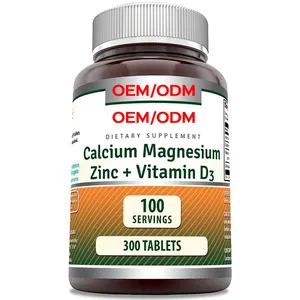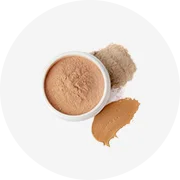Phổ biến trong ngành của bạn

Nước tiểu Túi 2000ml cho nam giới và phụ nữ thu thập nước tiểu y tế dùng một lần nước tiểu thoát nước Túi
0,10 US$ - 0,20 US$
Đơn hàng tối thiểu: 10000 Cái


Túi Đựng Rác Thải Y Tế Túi Y Tế Nguy Hiểm Sinh Học Chịu Nhiệt Độ Cao Đựng Mẫu Ziplock Lớn
0,15 US$ - 0,40 US$
Đơn hàng tối thiểu: 1000 Cái


Giá Rẻ Giá y tế cung cấp chứa chất thải Túi than hoạt tính lọc chứa chất thải Túi thoát nước túi chứa chất thải
0,50 US$ - 0,60 US$
Đơn hàng tối thiểu: 10000 Cái


Túi Đựng Nước Tiểu Y Tế 2000Ml Dùng Một Lần Cho Người Lớn Có Van Chữ T
0,10 US$ - 0,25 US$
Đơn hàng tối thiểu: 5000 Cái


Tự động Túi máu sản xuất dòng lưu trữ máu Bộ sưu tập y tế PVC túi máu Máy làm
150.000,00 US$
Đơn hàng tối thiểu: 1 Cái


Y Tế Truyền Máu Túi 250Ml 350Ml 450 Ml 500Ml Đơn Đôi Ba Bốn Túi Máu
0,822 US$ - 12,33 US$
Đơn hàng tối thiểu: 10000 Cái

Y tế dùng một lần PVC không PVC 50-6000ml Truyền Máu Túi Đôi ba với bướm Twist-off IV Túi
0,01 US$ - 0,15 US$
Đơn hàng tối thiểu: 5000 Cái

Ba 3 lớp medical_bag trong suốt giao thông vận tải thấm kín Zip mẫu bộ sưu tập phòng thí nghiệm mẫu túi
0,03 US$ - 0,23 US$
Đơn hàng tối thiểu: 10000 Cái

Túi Máu Y Tế Một Lần Gấp Đôi Gấp Bốn Lần 250ML 350ML 450ML 500ML Có Bộ Lọc
0,822 US$ - 12,33 US$
Đơn hàng tối thiểu: 10000 Cái

Y tế dùng một lần PVC không PVC Truyền Máu Túi Đôi ba với bướm Twist-off 50-6000ml
0,05 US$ - 0,20 US$
Đơn hàng tối thiểu: 1000 Cái

Túi Truyền Máu CPD CPDA Đơn Gấp Ba Lần 250Ml 350Ml 450Ml 500Ml
0,822 US$ - 12,33 US$
Đơn hàng tối thiểu: 10000 Cái

WEGO Bộ Sưu Tập Ba Lần Đơn Y Tế Rỗng Cho Các Nhà Sản Xuất Thú Y Túi Máu Truyền Máu Cho Động Vật
0,80 US$ - 3,00 US$
Đơn hàng tối thiểu: 2000 Cái

Y tế steril Truyền Máu túi đôi Ba tăng gấp bốn lần tùy chọn 250ml 350ml 450ml 500ml chất lượng tốt nhất sản phẩm cao cấp
10,00 US$ - 24,00 US$
Đơn hàng tối thiểu: 5000 Cái

Y tế hàng tiêu dùng với giá thấp và chất lượng tuyệt vời nhựa dùng một lần túi máu
0,50 US$ - 2,50 US$
Đơn hàng tối thiểu: 50 Bộ

Pet Y Tế Bệnh Viện Sử Dụng Y Tế Dùng Một Lần Duy Nhất Đôi Ba Tăng Gấp Bốn Bộ Sưu Tập Máu Túi 450Ml 500Ml
0,52 US$ - 3,00 US$
Đơn hàng tối thiểu: 2000 Cái

Bác sĩ thú y y tế máu động vật Bộ sưu tập túi 450ml 1000ml dùng một lần Truyền Máu túi cho gia súc cừu ngựa chó mèo
0,79 US$ - 2,90 US$
Đơn hàng tối thiểu: 2000 Cái

Yuyang Miễn Phí Mẫu Phòng Thí Nghiệm Ngón Tay Của Nhãn Hiệu Chuyển Mẫu Bộ Sưu Tập Mao Mạch 5UL 10ul 20ul Định Lượng Micro Máu Ống Collector
0,023 US$ - 0,027 US$
Đơn hàng tối thiểu: 10000 Cái

Chất Lượng Cao Túi Máu Máy Ly Tâm Ba Máy Ly Tâm Máu Thành Phần Tách Máu Thiết Bị Chế Biến
7.110,00 US$ - 8.110,00 US$
Đơn hàng tối thiểu: 2 Đơn vị

WEGO Túi Máu Huyết Tương Y Tế Dùng Một Lần Túi Truyền Máu Túi Máu Thú Cưng Có Chứng Nhận CE
0,80 US$ - 3,00 US$
Đơn hàng tối thiểu: 2000 Cái

450ml mô-đun duy nhất y tế steril Truyền Máu Túi ba bốn lựa chọn chất lượng tốt nhất sản phẩm cao cấp
10,00 US$ - 24,00 US$
Đơn hàng tối thiểu: 5000 Cái

Yuyang phòng thí nghiệm kiểm tra Pipette tip 5UL 10ul 20ul nắp phẳng định lượng mẫu Collector ngón tay Micro ngoại vi ống máu Bộ sưu tập
0,023 US$ - 0,027 US$
Đơn hàng tối thiểu: 10000 Cái

Túi Đựng Máu Động Vật Y Tế Vet Túi Máu Truyền Máu Thú Y 1 Lít 450Ml 1000Ml
0,80 US$ - 3,00 US$
Đơn hàng tối thiểu: 2000 Cái

500ml đôi mô-đun Túi MÁU TIỆT TRÙNG y tế truyền thiết bị ba bốn lựa chọn đôi chất lượng tốt nhất sản phẩm cao cấp
10,00 US$ - 24,00 US$
Đơn hàng tối thiểu: 5000 Cái

Yuyang phòng thí nghiệm CE ISO kiểm tra Pipette Triple 30ul 40ul ngoại vi vi nhựa PP Bộ sưu tập lấy mẫu máu Ống Collector
0,023 US$ - 0,027 US$
Đơn hàng tối thiểu: 10000 Cái

Bác Sĩ Thú Y Y Tế Động Vật Máu Bộ Sưu Tập Túi 200Ml 250Ml 300Ml 350Ml 400Ml 450Ml 500Ml Thú Y Truyền Túi Máu
0,80 US$ - 3,00 US$
Đơn hàng tối thiểu: 2000 Cái

350ml đôi mô-đun y tế steril Truyền Máu Túi ba bốn lựa chọn chất lượng tốt nhất sản phẩm cao cấp
10,00 US$ - 24,00 US$
Đơn hàng tối thiểu: 5000 Cái

Túi Lấy Máu Y Tế Rỗng Túi Chuyển Máu Với CPDA-1 Chống Đông Máu
0,35 US$ - 1,45 US$
Đơn hàng tối thiểu: 1000 Cái

Túi Đựng Máu Dùng Một Lần Y Tế Giá Nhà Máy Bán Sỉ 2023 Túi Đựng Máu Rỗng Với Kích Cỡ Khác Nhau
1,59 US$ - 2,99 US$
Đơn hàng tối thiểu: 1000 Cái

Tự động tần số cao hàn truyền Túi CE chứng nhận duy nhất đôi ba túi máu giá
Sẵn sàng vận chuyển
12.000,00 US$ - 15.000,00 US$
Đơn hàng tối thiểu: 1 Bộ
Vận chuyển mỗi chiếc: 0,00 US$

Máy Ly Tâm Làm Lạnh Trữ Máu Dung Tích Lớn Máy Tách Ba Túi Máu Huyết Tương 200Ml 450Ml 500Ml
12.000,00 US$ - 14.800,00 US$
Đơn hàng tối thiểu: 1 Bộ

2024 Hot Sản phẩm bán chạy giá tốt Nguồn cung cấp y tế dùng một lần y tế vô trùng bướm máu Bộ sưu tập kim với chủ
0,20 US$ - 0,30 US$
Đơn hàng tối thiểu: 1000 Cái
Vận chuyển mỗi chiếc: 0,23 US$

Công suất lớn 12x500ml ba túi máu refrigeratedlab thiết bị chính xác cao kiểm soát tốc độ tiếng ồn thấp Máy ly tâm
12.900,00 US$ - 16.500,00 US$
Đơn hàng tối thiểu: 5 Đơn vị

WEGO Túi Lấy Máu Y Tế Rỗng Túi Máu Vô Trùng Đơn Động Vật CPDA-1 Cho Thú Cưng
0,80 US$ - 3,00 US$
Đơn hàng tối thiểu: 2000 Cái

450ml đôi mô-đun Túi MÁU TIỆT TRÙNG y tế truyền thiết bị ba bốn lựa chọn đôi chất lượng tốt nhất sản phẩm cao cấp
10,00 US$ - 24,00 US$
Đơn hàng tối thiểu: 5000 Cái

Ba 500Ml 400Ml 250Ml Máu Túi Máy Ly Tâm Làm Lạnh Cho Phòng Thí Nghiệm & Blood Ngân Hàng
4.900,00 US$ - 6.200,00 US$
Đơn hàng tối thiểu: 1 Bộ

Ce phê duyệt 4 túi máu Tabletop ngân hàng Máu lạnh Máy ly tâm Swing Bucket rotor 4x800ml phòng thí nghiệm Máy ly tâm
3.835,00 US$ - 4.580,00 US$
Đơn hàng tối thiểu: 5 Bộ

WEGO Bán Cpda-1 Rỗng Y Tế Giá Xuất Xưởng Túi Máu 3 Ngăn Vô Trùng PVC
0,80 US$ - 3,00 US$
Đơn hàng tối thiểu: 2000 Cái

350ml tăng gấp bốn lần túi máu steril y tế truyền thiết bị đơn đôi Ba mô-đun trên kho chất lượng tốt nhất sản phẩm cao cấp
7,00 US$ - 24,00 US$
Đơn hàng tối thiểu: 5000 Cái

Công Suất Lớn 12X500Ml Ba Túi Máu Lạnh Máy Ly Tâm Ngân Hàng Máu Máy Ly Tâm Phòng Thí Nghiệm Máy Trung Quốc Nhà Sản Xuất
12.900,00 US$ - 16.500,00 US$
Đơn hàng tối thiểu: 5 Đơn vị

WEGO Túi Máu Nhựa Đơn Giá Xuất Xưởng Chất Lượng Cao Túi Máu Y Tế Dùng Một Lần
0,80 US$ - 3,00 US$
Đơn hàng tối thiểu: 2000 Cái
Các danh mục hàng đầu
Giới thiệu về túi máu ba lần y tế
Ngày nay, túi máu ba lần y tế không còn là điều mới mẻ đối với những người bình thường và không còn bị coi là điều cấm kỵ khi sử dụng. Nếu bạn đang tìm kiếm niềm vui áp chót đó, bạn phải kiểm tra sự bao la. Bộ sưu tập túi máu ba lần y tế tại Alibaba.com. Những gợi cảm và cong. túi máu ba lần y tế đáng giá từng xu và chắc chắn làm cho đêm đó trở nên đặc biệt đối với bạn. Những con búp bê này có ngoại hình giống như thật, bắt đầu từ tóc đến ngón chân theo mọi nghĩa.
Cho dù bạn là một người cô đơn đang tìm kiếm một người bạn đời như cuộc sống hay một cặp vợ chồng muốn thêm gia vị cho cuộc sống của họ, bạn đều có thể sử dụng chúng . túi máu ba lần y tế để đốt cháy ngọn lửa đó. Những ngoạn mục. túi máu ba lần y tế có thể tùy chỉnh theo mong đợi của bạn. Những điều tuyệt vời. túi máu ba lần y tế có sẵn ở cả phiên bản dành cho nam và nữ và được làm từ silicone cấp y tế để sử dụng an toàn. Hãy sở hữu ngay bây giờ và tận hưởng một đêm đam mê và cháy bỏng.
Alibaba.com cung cấp những điều tuyệt vời này. túi máu ba lần y tế ở mọi hình dạng cơ thể, kích thước và sắc tộc. Dù yêu cầu của bạn đối với. túi máu ba lần y tế, bạn có thể tải tất cả chúng trên trang web. Những cái này. túi máu ba lần y tế được tạo hình bởi những người thợ thủ công giỏi nhất và mọi chi tiết phức tạp đều được kiểm tra kỹ lưỡng. Những con búp bê này có mắt, tóc, móng tay và tất cả các bộ phận cơ thể khác tương tự như người thật.
Alibaba.com cung cấp nhiều loại. túi máu ba lần y tế có thể giúp bạn mua các sản phẩm phù hợp với ngân sách và các yêu cầu khác của bạn. Các sản phẩm này an toàn để sử dụng, được chứng nhận và thân thiện với môi trường trong tự nhiên. Đơn đặt hàng OEM có sẵn trên các sản phẩm này.
Cho dù bạn là một người cô đơn đang tìm kiếm một người bạn đời như cuộc sống hay một cặp vợ chồng muốn thêm gia vị cho cuộc sống của họ, bạn đều có thể sử dụng chúng . túi máu ba lần y tế để đốt cháy ngọn lửa đó. Những ngoạn mục. túi máu ba lần y tế có thể tùy chỉnh theo mong đợi của bạn. Những điều tuyệt vời. túi máu ba lần y tế có sẵn ở cả phiên bản dành cho nam và nữ và được làm từ silicone cấp y tế để sử dụng an toàn. Hãy sở hữu ngay bây giờ và tận hưởng một đêm đam mê và cháy bỏng.
Alibaba.com cung cấp những điều tuyệt vời này. túi máu ba lần y tế ở mọi hình dạng cơ thể, kích thước và sắc tộc. Dù yêu cầu của bạn đối với. túi máu ba lần y tế, bạn có thể tải tất cả chúng trên trang web. Những cái này. túi máu ba lần y tế được tạo hình bởi những người thợ thủ công giỏi nhất và mọi chi tiết phức tạp đều được kiểm tra kỹ lưỡng. Những con búp bê này có mắt, tóc, móng tay và tất cả các bộ phận cơ thể khác tương tự như người thật.
Alibaba.com cung cấp nhiều loại. túi máu ba lần y tế có thể giúp bạn mua các sản phẩm phù hợp với ngân sách và các yêu cầu khác của bạn. Các sản phẩm này an toàn để sử dụng, được chứng nhận và thân thiện với môi trường trong tự nhiên. Đơn đặt hàng OEM có sẵn trên các sản phẩm này.











